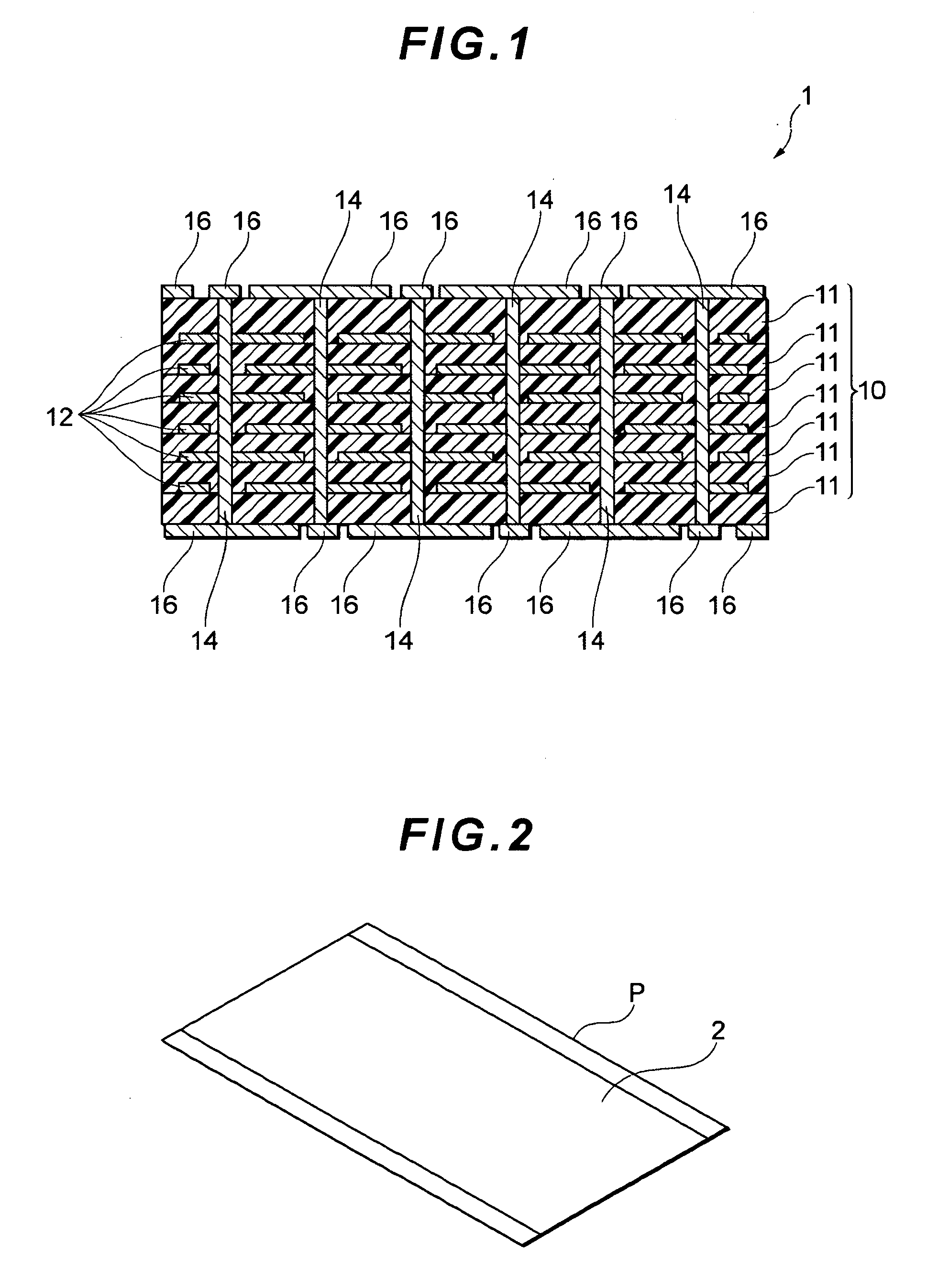Layered ceramic electronic component and manufacturing method therefor
- Summary
- Abstract
- Description
- Claims
- Application Information
AI Technical Summary
Benefits of technology
Problems solved by technology
Method used
Image
Examples
examples
[0056]Examples of the present invention will hereinafter be described. It should however be borne in mind that the invention is not limited to or by these examples.
(Production of Layered (Multilayer) Ceramic Capacitor)
[0057]In a similar manner to the production procedures as described above, a layered (multilayer) ceramic capacitor having a similar structure to that illustrated in FIG. 1 was produced. The following are specific principal processing conditions. Described specifically, the thickness of a ceramic green sheet after drying was adjusted to approximately 5 μm. The thickness of a pattern of a conductive paste for internal electrode formation formed on the ceramic green sheet was adjusted to approximately 1.2 μm. A via hole formed in the stacked layers structure was made using a microdrill (drill diameter: 150 μm, rotation speed: 100000 rpm). Division into each separated piece was effected using a dicer having a cutting blade having a thickness of 0.35 mm. Removal of the bin...
PUM
| Property | Measurement | Unit |
|---|---|---|
| Percent by mass | aaaaa | aaaaa |
| Percent by mass | aaaaa | aaaaa |
| Percent by mass | aaaaa | aaaaa |
Abstract
Description
Claims
Application Information
 Login to View More
Login to View More - R&D
- Intellectual Property
- Life Sciences
- Materials
- Tech Scout
- Unparalleled Data Quality
- Higher Quality Content
- 60% Fewer Hallucinations
Browse by: Latest US Patents, China's latest patents, Technical Efficacy Thesaurus, Application Domain, Technology Topic, Popular Technical Reports.
© 2025 PatSnap. All rights reserved.Legal|Privacy policy|Modern Slavery Act Transparency Statement|Sitemap|About US| Contact US: help@patsnap.com



